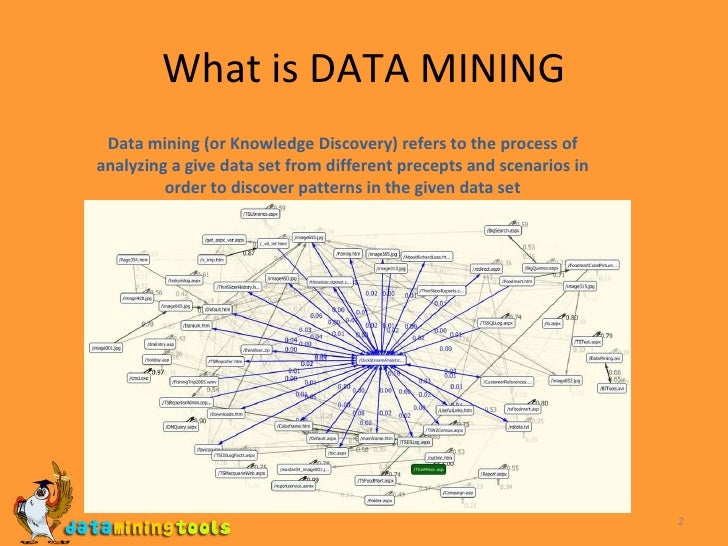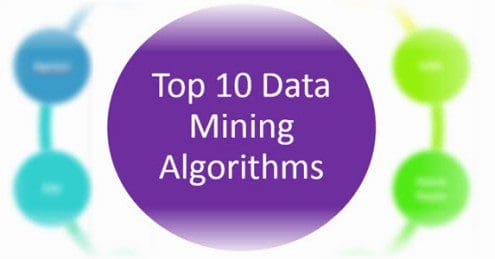What Is Data Mining
Data mining is the process of looking at large banks of information to generate new information. Intuitively, you might think that data “mining” refers to the extraction of new data, but this isn’t the case; instead, data mining is about extrapolating patterns and new knowledge from the data you’ve already collected.
APPLIES TO: SQL Server Analysis Services Azure Analysis Services Power BI Premium
Microsoft SQL Server Analysis Services provides the following tools that you can use to create data mining solutions:
The Data Mining Wizard in SQL Server Data Tools (SSDT) makes it easy to create mining structures and mining models, using either relational data sources or multidimensional data in cubes.
In the wizard, you choose data to use, and then apply specific data mining techniques, such as clustering, neural networks, or time series modeling.
Model viewers are provided in both SQL Server Management Studio and SQL Server Data Tools (SSDT), for exploring your mining models after they are created. You can browse models using viewers tailored to each algorithm, or go deeper into analysis by using the model content viewer.
The Prediction Query Builder is provided in both SQL Server Management Studio and SQL Server Data Tools (SSDT) to help you create prediction queries. You can also test the accuracy of models against a holdout data set or external data, or use cross-validation to assess the quality of your data set.
SQL Server Management Studio is the interface where you manage existing data mining solutions that have been deployed to an instance of Analysis Services. You can reprocess structures and models to update the data in them.
SQL Server Integration Services contains tools that you can use to clean data, to automate tasks such as creating predictions and updating models, and to create text mining solutions.
The following sections provide more information about the data mining tools in SQL Server.
Data Mining Wizard
Use the Data Mining Wizard to get started creating data mining solutions. The wizard is quick and easy, and guides you through the process of creating a data mining structure and an initial related mining model, and includes the tasks of selecting an algorithm type and a data source, and defining the case data used for analysis.
For More Information:Data Mining Wizard (Analysis Services - Data Mining)
Data Mining Designer

After you have created a mining structure and mining model by using the Data Mining Wizard, you can use the Data Mining Designer from either SQL Server Data Tools (SSDT) or SQL Server Management Studio to work with existing models and structures.
The designer includes tools for these tasks:
Modify the properties of mining structures, add columns and create column aliases, change the binning method or expected distribution of values.
Add new models to an existing structure; copy models, change model properties or metadata, or define filters on a mining model.
Browse the patterns and rules within the model; explore associations or decision trees. Get detailed statistics about
Custom viewers are provided for each different time of model, to help you analyze your data and explore the patterns revealed by data mining.
Validate models by creating lift charts, or analyzing the profit curve for models. Compare models using classification matrices, or validate a data set and its models by using cross-validation.
Create predictions and content queries against existing mining models. Build one-off queries, or set up queries to generate predictions for entire tables of external data.
SQL Server Management Studio
After you create and deploy mining models to a server, you can use SQL Server Management Studio to manage the Analysis Services database that hosts the data mining objects. You can also continue to perform tasks that use the model, such as exploring the models, processing new data, and creating predictions.
Management Studio also contains query editors that you can use to design and execute Data Mining Extensions (DMX) queries, or ot work with data mining objects by using XMLA.
Integration Services Data Mining Tasks and Transformations
SQL Server Integration Services provides many components that support data mining.
Some tools in Integration Services are designed to help automate common data mining tasks, including prediction, model building, and processing. For example:
Create an Integration Services package that automatically updates the model every time the dataset is updated with new customers
Perform custom segmentation or custom sampling of case records.
Automatically generate models passed on parameters.
However, you can also use data mining in a package workflow, as an input to other processes. For example:
Use probability values generated by the model to weight scores for text mining or other classification tasks.
Automatically generate predictions based on prior data and use those values to assess the validity of new data.
Using logistic regression to segment incoming customers by risk.
What Is Data Mining In Business
For More Information:Related Projects for Data Mining Solutions
See Also
Data Mining Extensions (DMX) Reference
Mining Model Tasks and How-tos
Mining Model Viewer Tasks and How-tos
Data Mining Solutions
Behind the Bitcoin
Other Cryptocoin Examples
Cryptocoin Mining
Mining cryptocoins is an arms race that rewards early adopters. You might have heard of Bitcoin, the first decentralized cryptocurrency that was released in early 2009. Similar digital currencies have crept into the worldwide market since then, including a spin-off from Bitcoin called Bitcoin Cash. You can get in on the cryptocurrency rush if you take the time to learn the basics properly.
Which Alt-Coins Should Be Mined?
If you had started mining Bitcoins back in 2009, you could have earned thousands of dollars by now. At the same time, there are plenty of ways you could have lost money, too. Bitcoins are not a good choice for beginning miners who work on a small scale. The current up-front investment and maintenance costs, not to mention the sheer mathematical difficulty of the process, just doesn't make it profitable for consumer-level hardware. Now, Bitcoin mining is reserved for large-scale operations only.

Litecoins, Dogecoins, and Feathercoins, on the other hand, are three Scrypt-based cryptocurrencies that are the best cost-benefit for beginners.
Dogecoins and Feathercoins would yield slightly less profit with the same mining hardware but are becoming more popular daily. Peercoins, too, can also be a reasonably decent return on your investment of time and energy.
As more people join the cryptocoin rush, your choice could get more difficult to mine because more expensive hardware will be required to discover coins. You will be forced to either invest heavily if you want to stay mining that coin, or you will want to take your earnings and switch to an easier cryptocoin. Understanding the top 3 bitcoin mining methods is probably where you need to begin; this article focuses on mining 'scrypt' coins.
Also, be sure you are in a country where bitcoins and bitcoin mining is legal.
Is It Worth It to Mine Cryptocoins?
As a hobby venture, yes, cryptocoin mining can generate a small income of perhaps a dollar or two per day. In particular, the digital currencies mentioned above are very accessible for regular people to mine, and a person can recoup $1000 in hardware costs in about 18-24 months.
As a second income, no, cryptocoin mining is not a reliable way to make substantial money for most people. The profit from mining cryptocoins only becomes significant when someone is willing to invest $3000-$5000 in up-front hardware costs, at which time you could potentially earn $50 per day or more.
Set Reasonable Expectations
If your objective is to earn substantial money as a second income, then you are better off purchasing cryptocoins with cash instead of mining them, and then tucking them away in the hopes that they will jump in value like gold or silver bullion. If your objective is to make a few digital bucks and spend them somehow, then you just might have a slow way to do that with mining.
Smart miners need to keep electricity costs to under $0.11 per kilowatt-hour; mining with 4 GPU video cards can net you around $8.00 to $10.00 per day (depending upon the cryptocurrency you choose), or around $250-$300 per month.
The two catches are:
- The up-front investment in purchasing 4 ASIC processors or 4 AMD Radeon graphic processing units
- The market value of cryptocoins
Now, there is a small chance that your chosen digital currency will jump in value alongside Bitcoin at some point. Then, possibly, you could find yourself sitting on thousands of dollars in cryptocoins. The emphasis here is on 'small chance,' with small meaning 'slightly better than winning the lottery.'
If you do decide to try cryptocoin mining, definitely do so as a hobby with a very small income return. Think of it as 'gathering gold dust' instead of collecting actual gold nuggets. And always, always, do your research to avoid a scam currency.
How Cryptocoin Mining Works
Let's focus on mining scrypt coins, namely Litecoins, Dogecoins, or Feathercoins. The whole focus of mining is to accomplish three things:
- Provide bookkeeping services to the coin network. Mining is essentially 24/7 computer accounting called 'verifying transactions.'
- Get paid a small reward for your accounting services by receiving fractions of coins every couple of days.
- Keep your personal costs down, including electricity and hardware.
What Is Data Mining In Healthcare
The Laundry List: What You Will Need to Mine Cryptocoins

You will need ten things to mine Litecoins, Dogecoins, and/or Feathercoins.
What Is Data Mining In Games
- A free private database called a coin wallet. This is a password-protected container that stores your earnings and keeps a network-wide ledger of transactions.
- A free mining software package, like this one from AMD, typically made up of cgminer and stratum.
- A membership in an online mining pool, which is a community of miners who combine their computers to increase profitability and income stability.
- Membership at an online currency exchange, where you can exchange your virtual coins for conventional cash, and vice versa.
- A reliable full-time internet connection, ideally 2 megabits per second or faster speed.
- A hardware setup location in your basement or other cool and air-conditioned space.
- A desktop or custom-built computer designed for mining. Yes, you may use your current computer to start, but you won't be able to use the computer while the miner is running. A separate dedicated computer is ideal. Do not use a laptop, gaming console or handheld device to mine. These devices just are not effective enough to generate income.
- An ATI graphics processing unit(GPU) or a specialized processing device called a mining ASIC chip. The cost will be anywhere from $90 used to $3000 new for each GPU or ASIC chip. The GPU or ASIC will be the workhorse of providing the accounting services and mining work.
- A house fan to blow cool air across your mining computer. Mining generates substantial heat, and cooling the hardware is critical for your success.
- You absolutely need a strong appetite of personal curiosity for reading and constant learning, as there are ongoing technology changes and new techniques for optimizing coin mining results. The most successful coin miners spend hours every week studying the best ways to adjust and improve their coin mining performance.